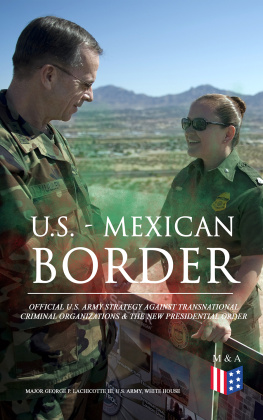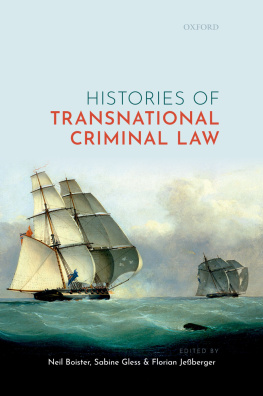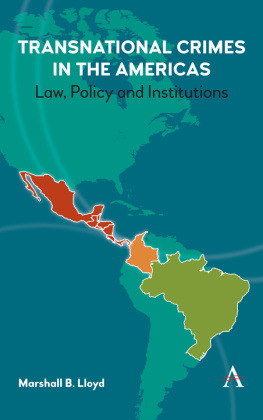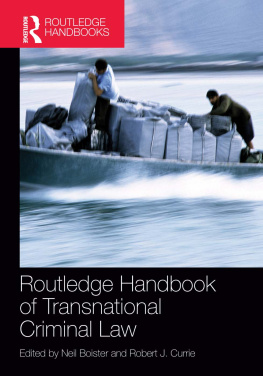Major George P. Lachicotte III, U.S. Army, White House
U.S. - Mexican Border: Official U.S. Army Strategy Against Transnational Criminal Organizations & The New Presidential Order
Preventing Criminal Organizations, International Trafficking & Enhancing Public Safety in the Interior of the United States
Madison & Adams Press, 2017. No claim to original U.S. Government Works
Contact
ISBN 978-80-268-7611-3
This is a publication of Madison & Adams Press. Our production consists of thoroughly prepared educational & informative editions: Advice & How-To Books, Encyclopedias, Law Anthologies, Declassified Documents, Legal & Criminal Files, Historical Books, Scientific & Medical Publications, Technical Handbooks and Manuals. All our publications are meticulously edited and formatted to the highest digital standard. The main goal of Madison & Adams Press is to make all informative books and records accessible to everyone in a high quality digital and print form.
Introduction
This monograph provides a starting point to address the importance of strategic guidance as it relates to operational planning for synchronized tactical actions. Analyzing Mexicos drug-war offers an interesting case study to help understand the current situation surrounding non-traditional forms of war, such as a drug related war, and how Mexicos internal conflict impacts their regional neighbors as well as the international community. The ultimate aim is to achieve a competent level of understanding in order to establish a unified regional approach that will disrupt the Mexican drug trafficking organizations and reduce violence to an acceptable and controllable level. Accomplishing this requires the unified efforts of all elements of national power from the U.S., Mexican, and regional governments by designing an operational approach that focuses efforts and unifies goals. The current U.S. and Mexican strategies work to contain drug trafficking organizations on a limited basis, but fail to fix the problem for the long-term because of their limited approach. At the conclusion, this study reveals how the employment of unified governmental approach can enhance the United States and Mexicos current security strategy by disrupting the actions of the Mexican drug trafficking organizations.
Social scientists and political scholars often see the U.S.-Mexican border as a critical vulnerability for the United States because it provides a point of entry opportunity into the country for virtually anyone.
The security of the U.S.-Mexican border is a growing concern for both countries, especially since their economic relationship has grown more interdependent over recent years. The North American Free Trade Agreement (NAFTA), manufacturing plants, and labor ties between the U.S. and Mexico have strengthened their economic interdependency over the last several decades. Mexican DTOs have taken advantage of established U.S.-Mexican policy protected trade routes created by those same economic opportunities, allowing them to feed off of American illegal drug users. Competition over the illegal narcotics market has resulted in increased violence in society, intimidation of the citizenry, and extensive coercion throughout the Mexican governance and law enforcement agencies. The Mexican governments inability to subdue drug trafficking cartels has destabilized Mexico, thus creating spillover effects into the U.S.
Mexicos DTO issues also have international ripple effects, such as allowing terrorists organizations to piggy back off of money laundering channels and infiltration routes into the U.S. established through the same drug trafficking arteries.
When examining the United States approach to the DTO issue, some scholars, like Ted Galen Carpenter of the Cato Institute, and national leaders, like former Mexican President Vicente Fox Quesada, claim that the focus of both countries needs to be the reexamination of their current strategic approach.
Because of regional outcries for help and assistance, public pressure from southwestern U.S. and Mexican citizens have increased in order to push for the current administrations from both countries to produce a response and a long-term security vision to produce a stable environment. The outpour for better security and more stability continues to grow louder from the population within the borderland region because the balloon effect continues to exacerbate environmental degradation in new areas.
While the allocations of resources have questionable impacts because they continue to focus on cultivation and low-level criminal offenses, the larger perceived threat to the U.S. is the conflict spillover from Mexicos internal drug war. However, even with this persuasive evidence, the U.S. strategy tends segregate its agencies to focus only on the drug problem rather than the cartels and their violent business practices.
The current U.S. strategy is to reduce and, ultimately, prevent the flow of drugs into the U.S. This strategy highlights the usage of international cooperation and interdiction efforts targeted at disrupting the drug trade industry.
Failing to disrupt the drug business practices of DTOs has greater implications, such as illegal arms smuggling, human trafficking, illegal immigration, and facilitation of international terrorists potential infiltration into the U.S. Rather than segregating the governmental counter to illegal activities, the United States in conjunction with the Mexican government, and possibly the international community, needs to design an approach that will synchronize efforts and operations across all elements of national power in order to shock drug trafficking organizations.
Matthew M. Brown, Engaging the Borderlands: Options for the Future of U.S. Mexican Operations. Monograph (masters monograph, School of Advanced Military Studies, 2010), 1.
Ted Galen Carpenter, The Fire Next Door (Washington, DC: Cato Institute, 2012), 1.
Sara Miller Llana, Mexico Drug War Death Toll Up 60 Percent in 2010, Why?, The Christian Science Monitor (13 January 2011) (13 January 2011) http://www.csmonitor.com/World/Americas/2011/0113/Mexico-drug-war-death-toll-up-60-percent-in-2010-Why (accessed 12 November 2012).
June S. Beittel, Mexico's Drug Trafficking Organizations: Source and Scope of Rising Violence, Congressional Research Report (Washington, DC: Congress Research Service, 2012), Summary.
Ibid.
Rex A. Hudson, "The Sociology and Psychology of Terrorism: Who Becomes a Terrorist and Why?" A Report Prepared under an Interagency Agreement by the Federal Research Division, Library of Congress (September 1999) http://www.fas.org/irp/threat/frd.html (accessed December 1, 2012).
Tactical level is roughly defined as the military level at which the actions of forces on the ground are employed and organized to conduct battles, engagements, and activities to achieve military objectives assigned to tactical units or task forces. The strategic level is the planning or implementation of ideas that will employ the instruments of national power in a synchronized and integrated fashion to achieve theater, national, and/or multinational objectives. Joint Chiefs of Staff, Joint Publication 3-0: Joint Operations (Washington DC: The United States Joint Chiefs of Staffs, 2011), xi-xii; operational approach, with respect to this paper, is a planning tool that helps commanders and staffs visualize where to go, what the current situation is, and how to get to that desired end state from where their organizations are at that particular time. The elements of operational art not discussed are not valued any less than the seven elements that are utilized in this paper. Department of the Army, Army Doctrine Reference Publication 3-0:









